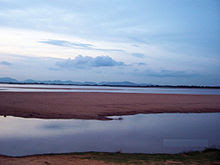
Early history of Cuttack is associated with the Keshari dynasty. As stated by the distinguished historian A. Stirling, present-day Cuttack was established as a military cantonment by king Nrupa Keshari of Keshari dynasty in 989 A.D. Stirling based his opinion on Madala Panji, a chronicle of Jagannath temple of Puri. The reign of Markata Keshari was distinguished for the stone embank built to protect the new capital from flood in 1002 A.D.
Historical evidence suggests Cuttack becoming capital of a Kingdom founded by Anangabhimadeva of Ganga dynasty in 1211 A.D. After the end of Ganga rule, Orissa passed to the hands of the Gajapati Kings (1435-1541 A.D.) of Solar dynasty under whom Cuttack continued to be the capital of Orissa. After the death of Mukunda deva, the last Hindu king of Orissa, Cuttack first came under Muslim rules and later under Mughals.
By 1750, Cuttack came under Maratha rules and it grew fast as a business centre being the convenient point of contact between the Marathas of Nagpur and the English Merchants of Bengal. It was occupied by the British in 1803 and later became the capital of Orissa division in 1816. From 1948 onwards, when the capital was shifted to Bhubaneswar, the city remained the administrative headquarters of Orissa.
Remnants of an old fort called Barabati still exist in the heart of Cuttack with the moat around the fort. Nearby is a modern stadium called the Barabati Stadium, host to many national and international cricket matches. Recently the stadium was updated with floodlights and D/N matches are taking place. Recent growth of the city has resulted in expansion across the river Kathjori and a newer township towards the head of the delta formed between the tributary Kathjori river and the Mahanadi. Cuttack is referred to as a city with Babaan Bazaar, Teppan Galee i.e. a city having 52 markets and 53 streets.
Historical evidence suggests Cuttack becoming capital of a Kingdom founded by Anangabhimadeva of Ganga dynasty in 1211 A.D. After the end of Ganga rule, Orissa passed to the hands of the Gajapati Kings (1435-1541 A.D.) of Solar dynasty under whom Cuttack continued to be the capital of Orissa. After the death of Mukunda deva, the last Hindu king of Orissa, Cuttack first came under Muslim rules and later under Mughals.
By 1750, Cuttack came under Maratha rules and it grew fast as a business centre being the convenient point of contact between the Marathas of Nagpur and the English Merchants of Bengal. It was occupied by the British in 1803 and later became the capital of Orissa division in 1816. From 1948 onwards, when the capital was shifted to Bhubaneswar, the city remained the administrative headquarters of Orissa.
Remnants of an old fort called Barabati still exist in the heart of Cuttack with the moat around the fort. Nearby is a modern stadium called the Barabati Stadium, host to many national and international cricket matches. Recently the stadium was updated with floodlights and D/N matches are taking place. Recent growth of the city has resulted in expansion across the river Kathjori and a newer township towards the head of the delta formed between the tributary Kathjori river and the Mahanadi. Cuttack is referred to as a city with Babaan Bazaar, Teppan Galee i.e. a city having 52 markets and 53 streets.
No comments:
Post a Comment